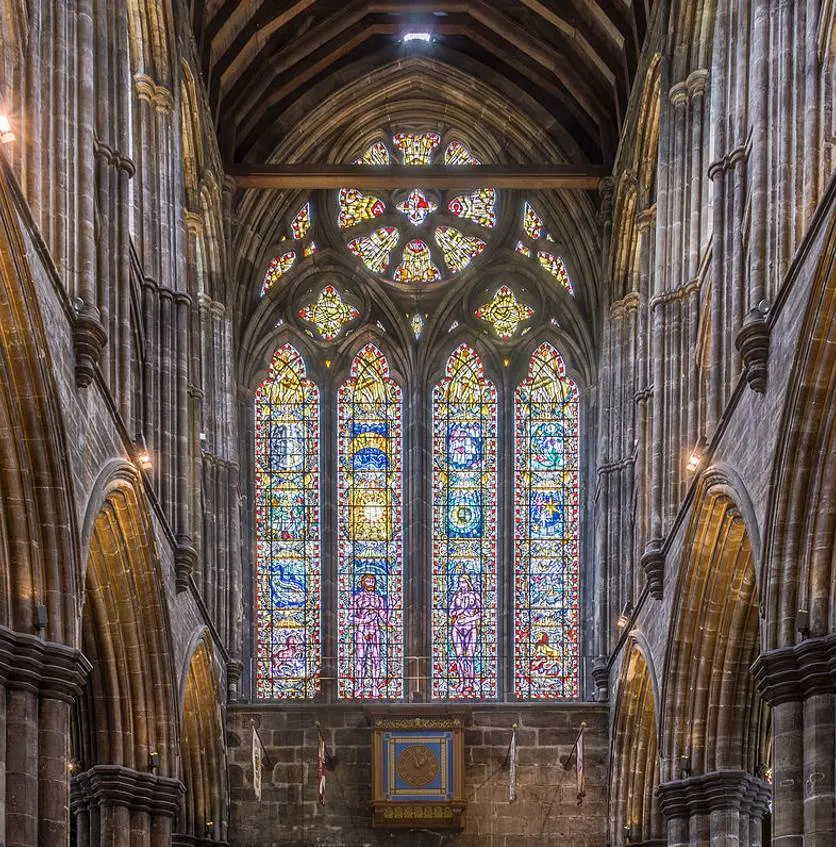The oldest building in Glasgow is also the oldest building in Mainland Scotland. This magnificent church has an extended history that dates back to the 12th century.
Let’s take a closer look at some of the most interesting facts about Glasgow Cathedral, one of the most remarkable landmarks in the most populous city in Scotland.
1. It’s located in the historical heart of the city
Glasgow Cathedral is one of the parish churches of the Church of Scotland and is located right in the historical heart of the city. It used to be the most important church in the city and the seat of the Archbishop of Glasgow until the 16th century.
The cathedral is dedicated to the patron saint of the city named Saint Mungo, a man who founded the city in the 6th century and who ended up being buried in the Cathedral. His tomb is still present in a chapel of the building today.
The historic landmark is located just west of the Glasgow Necropolis, a Victorian-era cemetery, and faces Cathedral Square to the east.

2. The original church was dedicated in the presence of King David I
Even though Saint Mungo had founded a small monastic community in the area in the 6th and early 7th centuries, the first stone cathedral wasn’t erected until the 12th century.
This stone structure was consecrated in the year 1136 under the presence of King David I (1084-1153). It was built on the exact location where Saint Mungo was buried about 500 years earlier.
This explains the unusual choice to build a structure of this side because the area is relatively hilly. The church was also much smaller than the current one as its western front only reached the third pier of the church we see today.
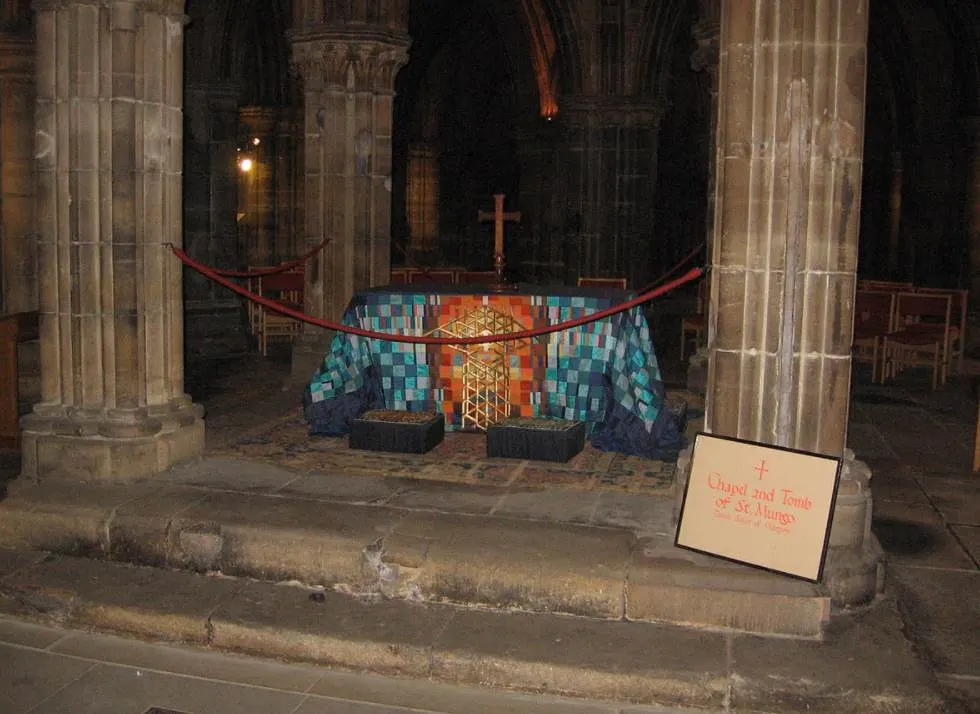
3. Most of the current church dates back to the 13th century
The first version of Glasgow Cathedral didn’t last long because it was destroyed by fire during the same century that it was erected. The present-day cathedral was consecrated in the year 1197.

The church was greatly expanded during two building projects, one that was completed between 1207 and 1232, and a subsequent one that was completed between 1233 and 1258.
By the end of the 13th century, the cathedral pretty much looked as it does today, including the central tower, the spire, and the entire nave. A lightning strike in the year 1406 resulted in the spire and central tower being rebuilt in the 15th century.
The church has the following dimensions:
- Length: 87 meters (285 feet)
- Width: 20 meters (65 feet)
- Height: 32 meters (105 feet)
- Spire Height: 68 meters (225 feet)
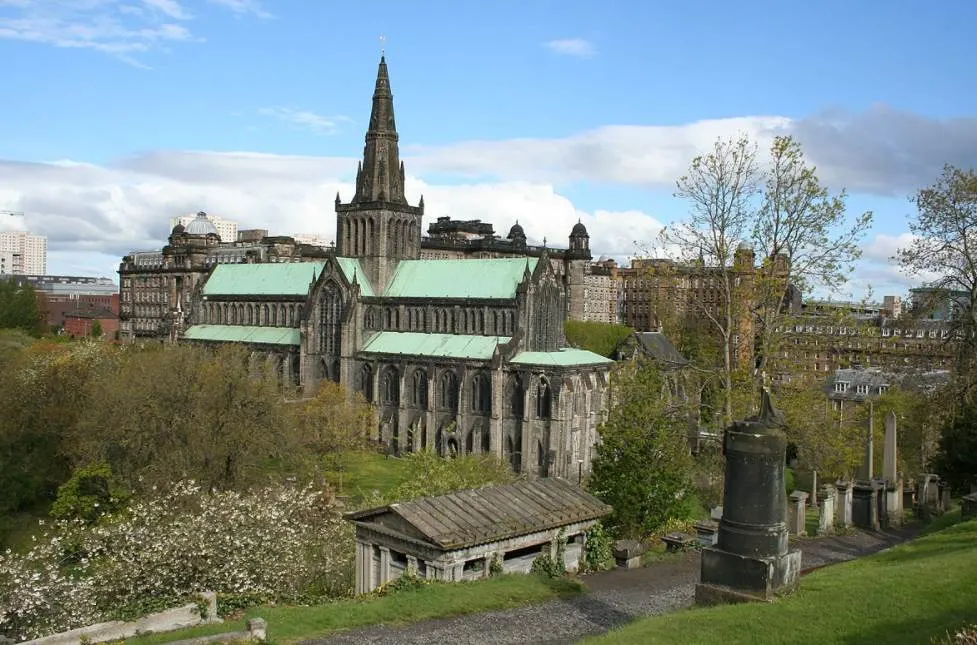
4. It’s one of just 2 churches in Scotland that survived the Reformation
The Scottish Reformation happened in the 16th century as an extension of the widespread European Protestant Reformation. A lot of churches in Scotland were destroyed during this period of unrest.
Remarkably, Glasgow Cathedral was spared from any major destruction. This means that the building as it looks today dates back to the construction period of the 13th century and the renovation of the 15th century.
This doesn’t mean that the interior was spared, though, because the structure was “cleansed of its Catholic furnishing.” The roof was also partially stripped of its lead but was repaired in the late 1570s.
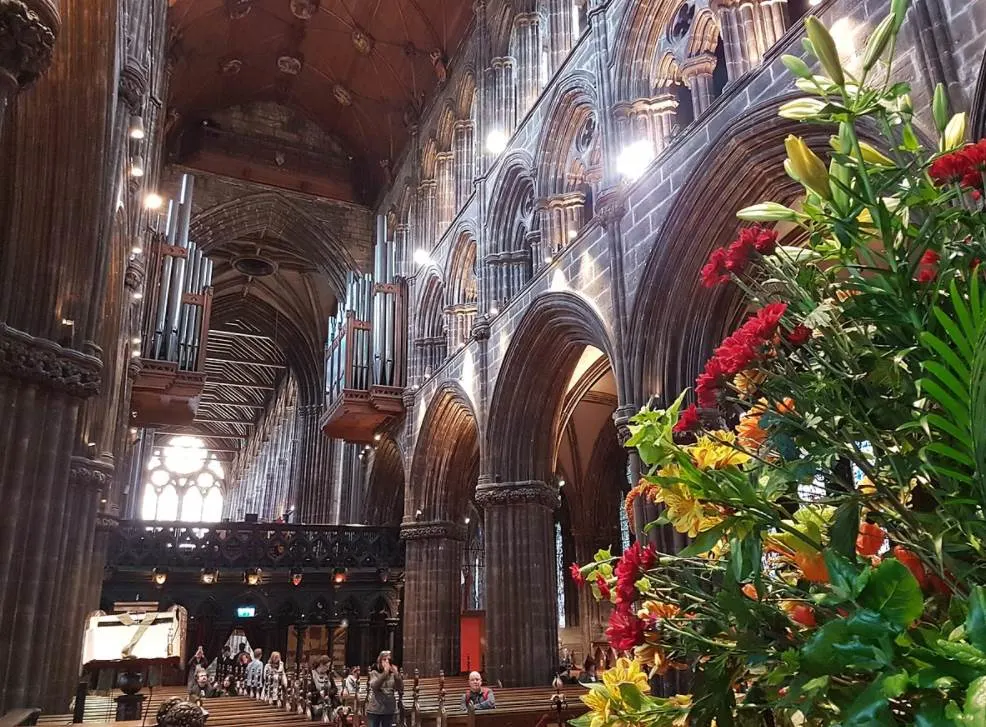
5. The building has been Crown property since the 16th century
The result of the Scottish Reformation was that the cathedral ended up becoming Crown property in 1587. This was also a time that 3 separate congregations were served inside the cathedral, quite a remarkable development.
Today, the church is under the management of the “Historic Environment Scotland,” an organization that was established when the former government agency called Historic Scotland and the Royal Commission on the Ancient and Historical Monuments of Scotland merged in 2015.
Today, the church is a fascinating tourist attraction in the city of Glasgow and especially the interior medieval architecture is a highlight in the city. This definitely makes it a landmark to put on your Glasgow bucket list.

More interesting facts about Glasgow Cathedral
6. Even though detailed records exist of the first stone cathedral built on this location, little is known about the buildings that preceded it. These were most probably much smaller and made of timber, including the shrine dedicated to Saint Mungo.
7. One of the most important non-religious events in the history of Glasgow Cathedral happened in the year 1451. This was the year that the University of Glasgow was established.
The first classes were held in the chapter house of the cathedral. The University of Glasgow is the second-oldest university in Scotland after St Andrews and the fourth-oldest university in the English-speaking world.
8. The Scottish Reformation resulted in the cathedral being used by 3 separate congregations. These are referred to as the Inner High, the Outer High, and the Barony.
Today, the cathedral serves as a part of the Church of Scotland referred to as the Presbytery of Glasgow, one of the 4 of its kind in Scotland.
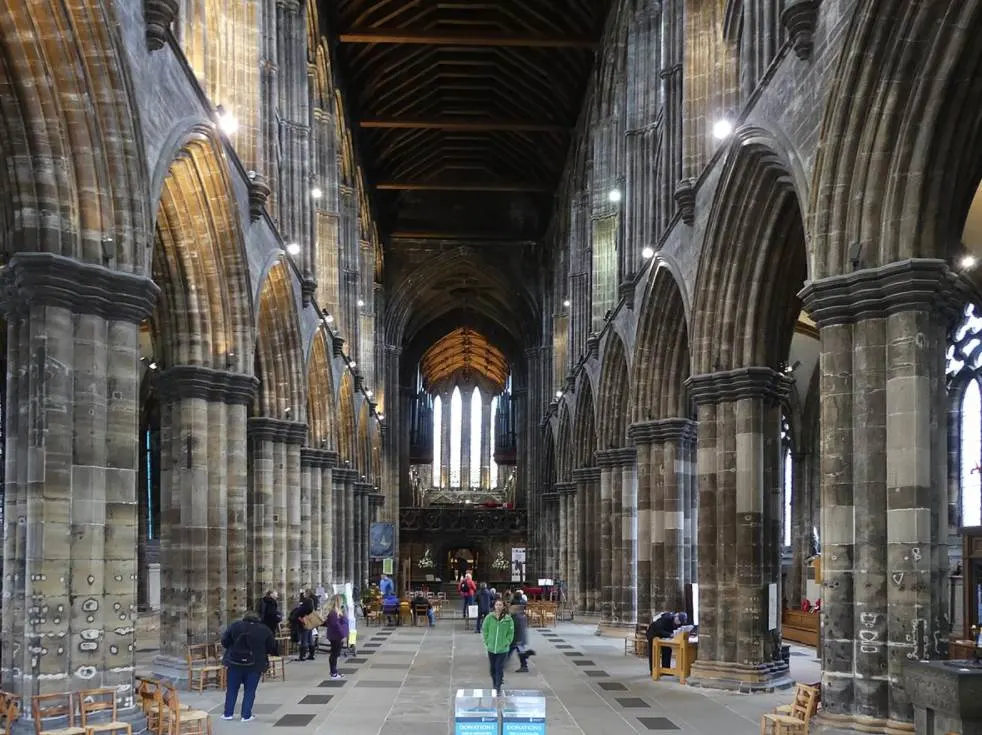
9. One of the most peculiar facts about Glasgow Cathedral is that two towers of the church were demolished in the 19th century. Both the southwestern tower and the northwestern tower were torn down because they were deemed to be “unsymmetrical.”
The idea behind this was to complete symmetrical towers to replace them, but because the funds to complete the project weren’t there, these were never built. Two nave aisles were built instead to replace the two demolished towers.
10. Even though much of the core structure of the cathedral is original, not every element is. One of these is the stained glass windows of the church. These had faded so much by the year 1938 that they were gradually replaced the following decades.
One of the most fascinating ones was completed by English stained glass artist Francis Spear (1902-1979) and is called “The Creation.” This fascinating work of art can be found in the Great West Window of the cathedral.
